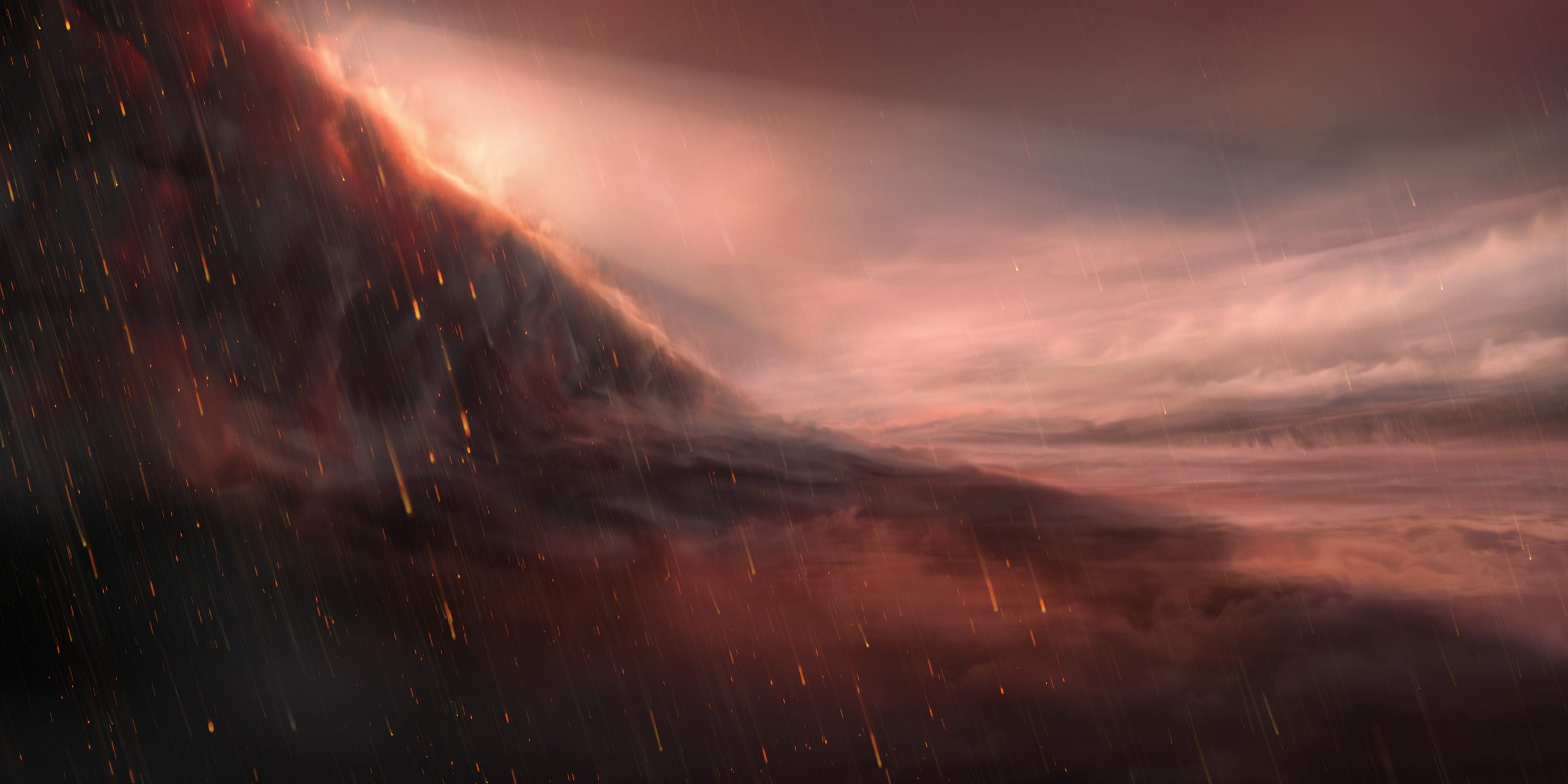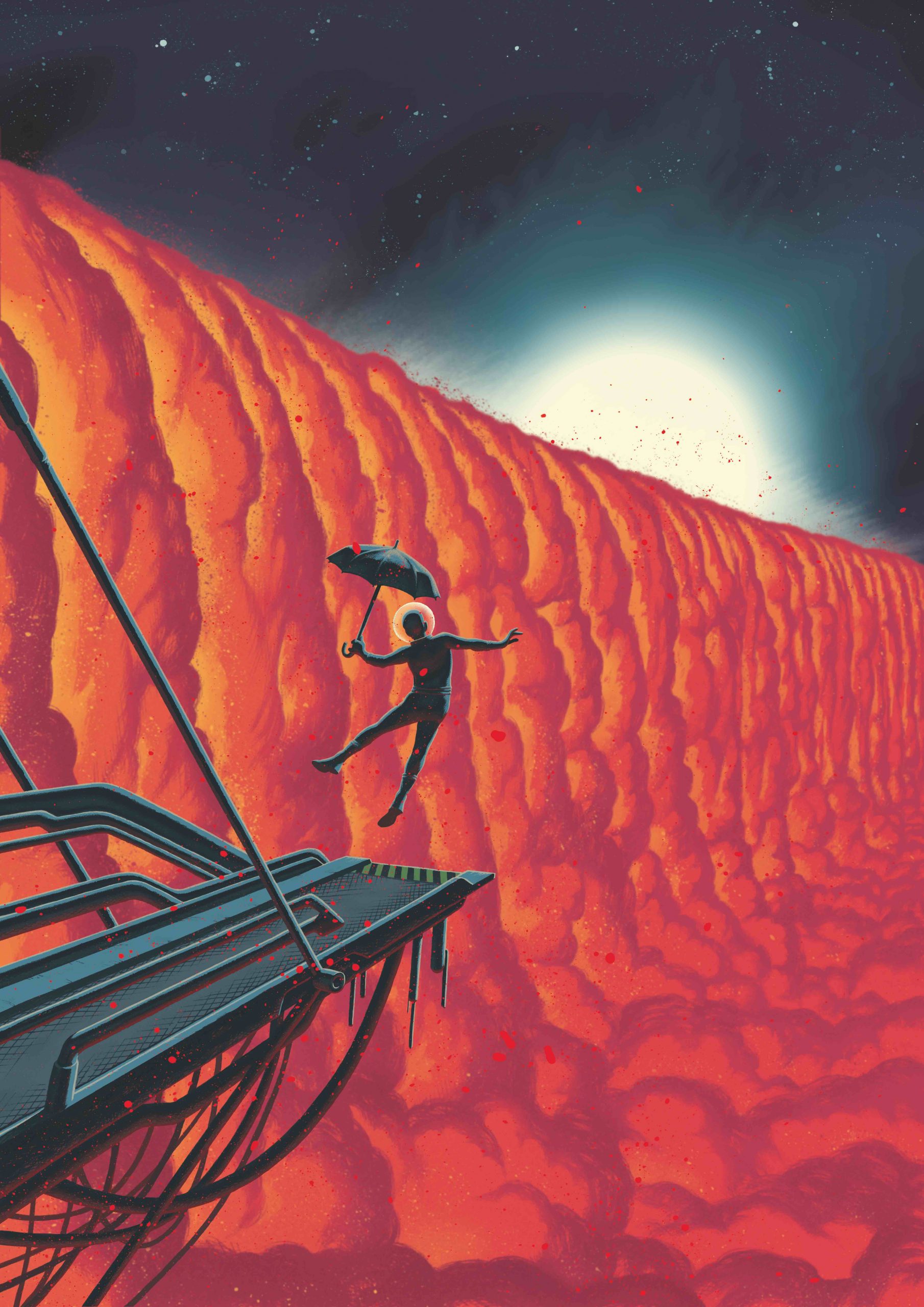Today’s forecast: cloudy with a 100% chance of iron rain in the evening
The exoplanet, WASP-76b, about 640 light-years from Earth, orbits its host star, WASP-76, once every approximately 1.8 days at the relatively small distance of only 0.03 astronomical units (AU). The Earth, in contrast, is at a distance of 1 AU from the Sun. The star, WASP-76, is somewhat larger and hotter than the Sun, but that doesn’t make much of a difference for the planet orbiting around it. At such a small distance, the planet would be damn hot no matter how big the star was. The planet, almost as massive as our Jupiter, is therefore classified as a “Hot Jupiter.” The huge amount of heat has greatly inflated this alien world; WASP-76b has a diameter significantly larger than our Jupiter.
But that isn’t the planet’s most exciting feature. WASP-76b moves around its star in a tidally locked orbit, so the same side is always facing its star. It is so hot that molecules split into atoms and metals, such as iron, are vaporized into the atmosphere. If an observer were to move from the always dark night side (average temperature: 1500 °C [2730 °F]) to the much hotter day side (2400 °C [4350 °F]), he or she would be subjected to a rather unpleasant phenomenon: a storm front spanning the entire planet with rain of hot, molten iron. Astronomers of the European Southern Observatory (ESO) have now published an explanation for this phenomenon in an article in Nature.
“Observations have shown that iron vapor is abundant in the atmosphere of the hot day side of WASP-76b,” explains María Rosa Zapatero Osorio, an astrophysicist at the Centre for Astrobiology in Madrid, Spain, and chair of the ESPRESSO science team. “A fraction of this iron is carried into the night side due to the planet’s rotation and atmospheric winds. There, the iron encounters much cooler environments, condenses and rains down.” Therefore, “we don’t see iron vapor in the morning,” explains David Ehrenreich, professor at the University of Geneva in Switzerland and the lead scientist on the study of this unusual planet.


If I could, only, observe these natural displays, in person, of planetary expositions would be a gift of a lifetime filled with wonder around me, resolutely left here, on Earth.